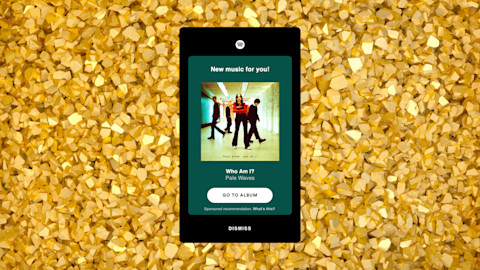Glossary of Music Terms is an ongoing series where we zoom in on a corner of the music industry to demystify its terminology. Check out our previous installments on Distribution, Recording, Live Performances, and Streaming.
The sky’s the limit when it comes to opportunities for marketing your music to new audiences. There are plenty of new tools that can get down to the nitty-gritty of how to most effectively plot your next strategies, but a lot of the lingo involved can sound like drab, technical jargon. This glossary of common terms in the marketing world explains what’s easily available to artists now and how it can help you get your tunes into the ears of eager listeners.
Campaign: A campaign is the entire overview of the push to market a release or tour or even increased public awareness of you as an artist. It includes your strategies, assets, release dates, analytics, budget, and more.
Analytics: Analytics is simply the information gleaned from data or statistics, like the number of song streams or how many new users followed your artist page in a given period. This offers insights into what strategies are working best for you.
Cross-Platform: This involves marketing your music across multiple platforms, like social media pages, or via mobile vs. desktop. Aided by analytics, a cross-platform strategy leverages the specific benefits of each medium.
Distribution: Distribution is what makes your music available to stores and streaming services. This can go through a label or a third-party company, like CD Baby, Tunecore, DistroKid, AWAL, and others.
Content: Content is the broad swath of media or information you share with the public, including songs, videos, blog posts, tweets, and off-the-cuff Instagram stories.
Asset/Creative: Assets, or creative, are the media you have or will create specifically to promote a release, including music videos, promotional photos, and album artwork.
Call to Action: A call to action is a prompt that persuades a user to complete a desired behavior as determined by you, like streaming a single or buying an album. It can be as simple as “click here” or “listen now.”
Reach: Reach is the total number of unique users who are exposed to your content. It can help you understand how effective advertising on a specific platform is.
KPI: A KPI (Key Performance Indicator) is the numeric goal you set for any facet of your campaign. This could be a certain amount of streams, album sales, shows booked, etc. you want to achieve through marketing.
Click-Through Rate: Click-through rate, or CTR, is the number of times something is clicked on versus the times they see that option, whether it’s an ad, song, or link to a merch store.
Conversion: A conversion is when a user performs a desired behavior such as clicking through a link then purchasing something, following your profile, or listening to a song. Conversion rate, similar to CTR, measures how often this happens versus how many people see your content.
Attribution: Attribution measures the effectiveness of which types of marketing lead to a conversion, allowing you to see where your campaign is most successful.
Lift: Lift is the amount of improvement that results from a new campaign. By comparing the analytics of those who receive your new marketing strategy versus those who still experience your old plan, you can see where you’ve improved or declined.
A/B Testing: A/B testing is a way of identifying which of two options is more effective. It involves presenting a sample group of users with two versions of a single variable—like two different designs of the same webpage—and measuring which option, A or B, gets better results.
Targeting: Targeting is a way of narrowing down your desired audience into certain demographics and using that information to figure how out to best reach them, like promoting your music on a social network they’re most likely to use.
Organic vs. Paid: Organic marketing, or “inbound marketing,” involves content that’s created naturally by an artist, like blog posts or social media updates. It can be optimized to reach bigger audiences using tactics like search engine optimization (SEO). Paid marketing is a premium strategy, like advertising, promoting posts, or doing sponsored content. By investing in this, you can potentially reach more listeners and turn them into customers more quickly.
Pitch: A pitch is you, your publicist, manager, or booking agent trying to sell another party on an idea. The goal might be getting your music written up by a publication, earning brand sponsorships, finding venues to book you, or in the case of Spotify, pitching your music for playlist consideration. A well-targeted pitch can land you many opportunities.
Press/Media Release: A press release is a statement that alerts the media to what you’re up to—a new release, tour, collaboration, etc.—in the hopes it will get coverage.
Touring Market: A touring market is the geographical and demographical areas in which you plan to perform. This could be broad, like “Europe,” or specific, such as “towns with populations under 50,000 across the Midwest US.” Part of your campaign will involve determining how to target fans in these markets.
-Matt Williams






